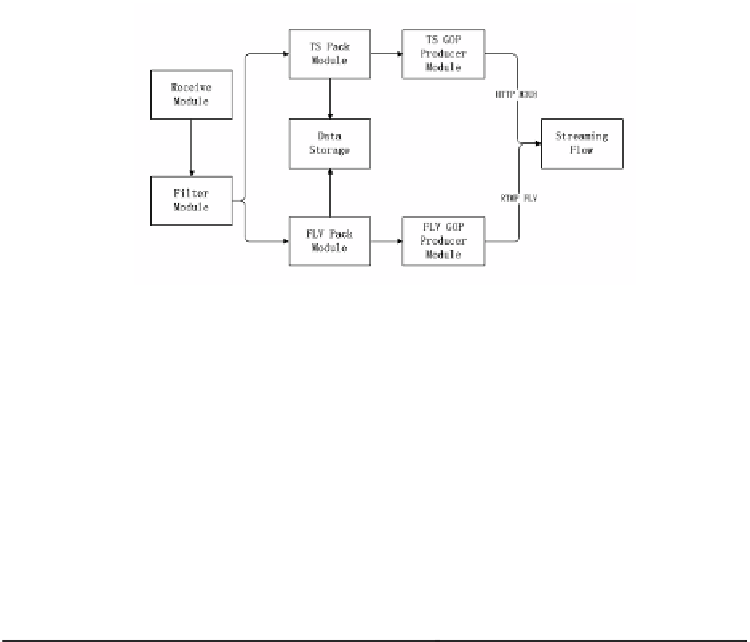Graphics Reference
In-Depth Information
path of slice file is transported through the protocol of HLS
[11]
. At the same time,
encoded data is stored in the local data server. If the live streaming is finished, media
data saved in the data server can also be requested by the client.
Fig. 2.
Modules of media server
Table 1.
Request method for RTMP and HLS protocol
URI
Explanation
rtmp://ip:port/chanel/datarate.flv/live
Flash live stream on specified
channel and datarate
rtmp://ip:port/video/filename.flv&dr=datarate
Flash Video stream on specified
datarate
http://ip:port/chanel/datarate.ts/live
Mpeg-tsLive stream on specified
channel and datarate
http://ip:port/video/filename.m3u8&dr=datarate
Mpeg-ts video stream on speci-
fied datarate
3.2
Data Caching and Load Balancing for Distribution Server
When the edge distribution server is requested by client, the cache is checked if the
data exists in the local cache. In the virtual reality system, if the request is hit on the
local server, the data flow will be directly sent to client. Otherwise, the edge distribu-
tion server will turn to the central media server to request data. The requested data
flow is saved in the local server so that the edge distribution server doesn't need to
request data if next client requests the same data flow. In case there is no enough sto-
rage space for the cache of the data flow in the local server, the resource that is not
recently used will be replaced. Replacement policy in the virtual reality system is
more complicated than the traditional content distribution network because the data is
continuously requested within the region. The visited frequency of Virtual scene, last
request time of media streaming and times of recently visited are all key factors



Search WWH ::

Custom Search